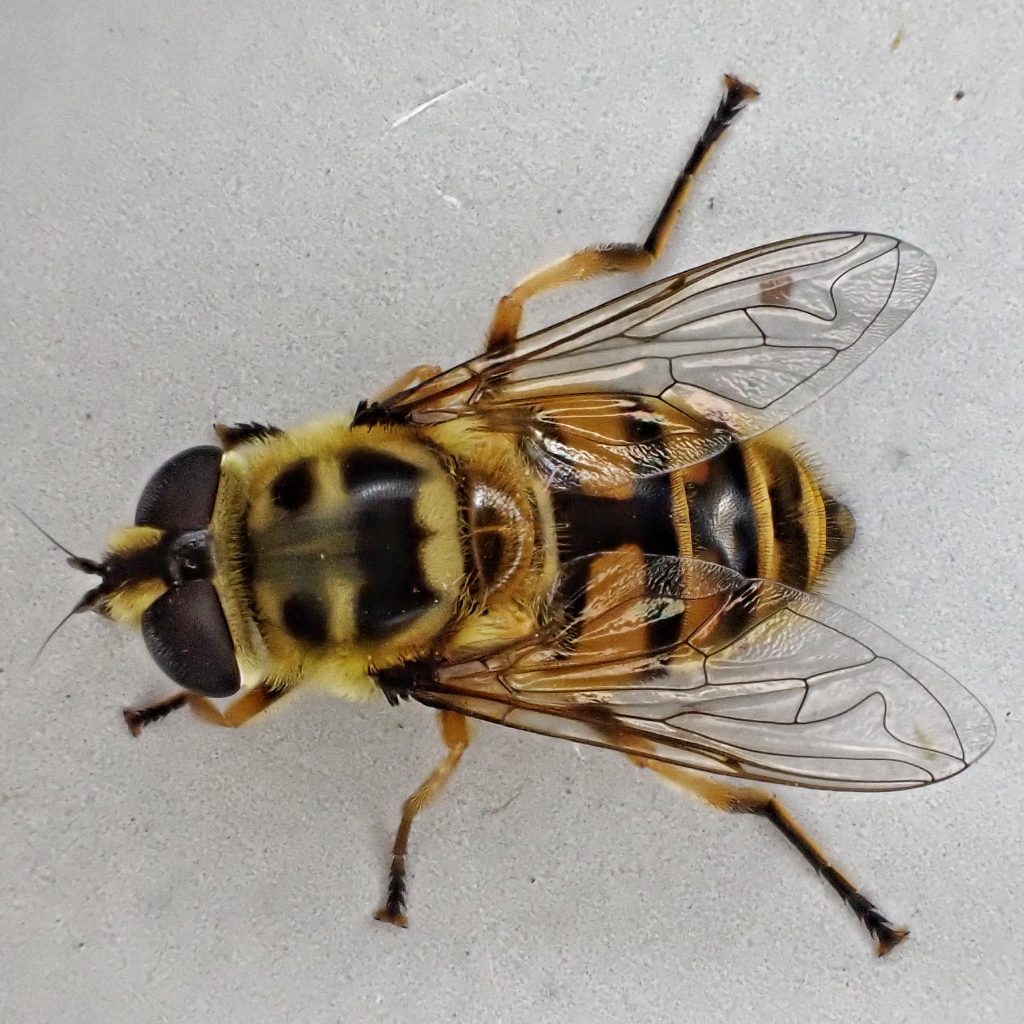
Well, I finally found an easy-to-identify flower fly (family Syrphidae). There is simply nothing else that looks like a well marked Myatropa florea. This Syrphid goes by the common names yellow-haired sun fly, deadhead hoverfly, and my favorite, mostly because that’s what I started calling it as soon as I saw it (and well before I knew what it was), the Batman hoverfly, because of the ‘bat symbol’ on the rear of the pronotum. One resource says it’s called the deadhead fly because its pollination efforts cause ‘deadheads’ (flowers where the petals have shriveled, leading gardeners to lop them off) but my guess is that in pre-comic book days people thought the pattern on the pronotum resembled a skull.

This is yet another interesting insect I found while canvassing the local cemetery during our recent record breaking heat wave. These Eurasian flower flies are relatively recent additions to the North American fauna. The first one was found in San Francisco in 2005, and have since become established on the West Coast. But, since syrphids in general are primarily beneficial and entirely harmless, this is one exotic that won’t be considered invasive. With the decline in native pollinators, the introduction of a highly adaptable species such as Myathropa florea can only be described as a positive event.
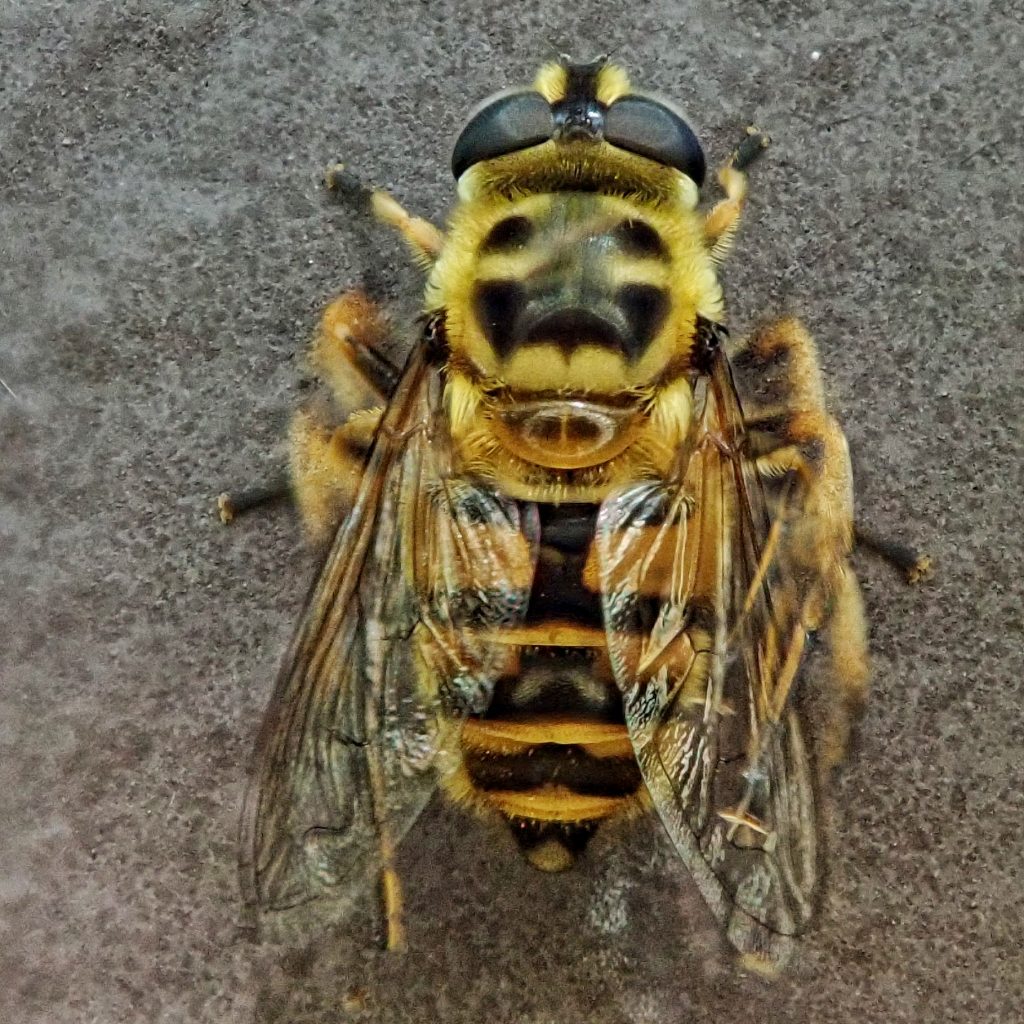
Most syrphid flys are Hymenoptera mimics, and some seem very specific. But Myathropa florea is more of an impressionist mimic. The forgery doesn’t bear up under close scrutiny, but probably buys it some time and cuts down on attacks, especially by anything that has been stung by the real thing. They are Batesian mimics, which is what it’s called when a harmless insect mimics a more dangerous one. And when the mimicry doesn’t work they are apparently very fast and agile fliers. To my knowledge I’ve never seen this species in flight, but Syrphidae in general have proven to be very maneuverable when I’ve attempted to net one in flight.
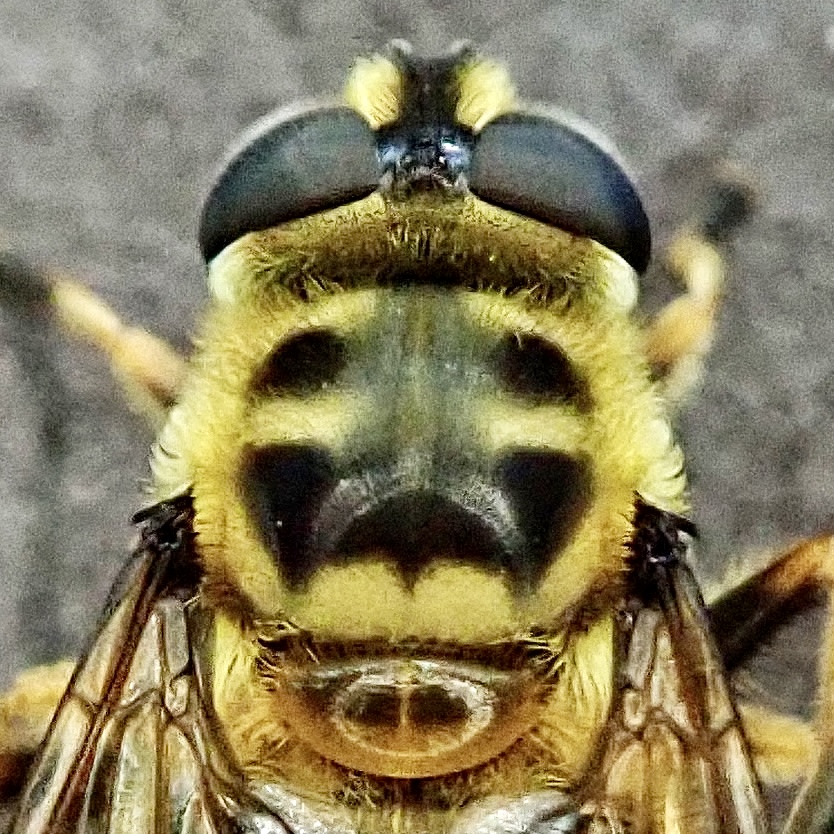
The larvae are of the type called rat-tailed maggots, but the ‘rat-tail’ is actually a long breathing tube that allows them to stay below the surface while receiving oxygen. And they also have the ability to expel air to enable them to dive when the natural buoyancy of their fat bodies causes them to rise involuntarily toward the surface. Males searching for a mate fly in circles making an audible buzzing noise. And both males and females frequent stream margins making patrolling flights, as well as settling on stones at the waters edge to drink.
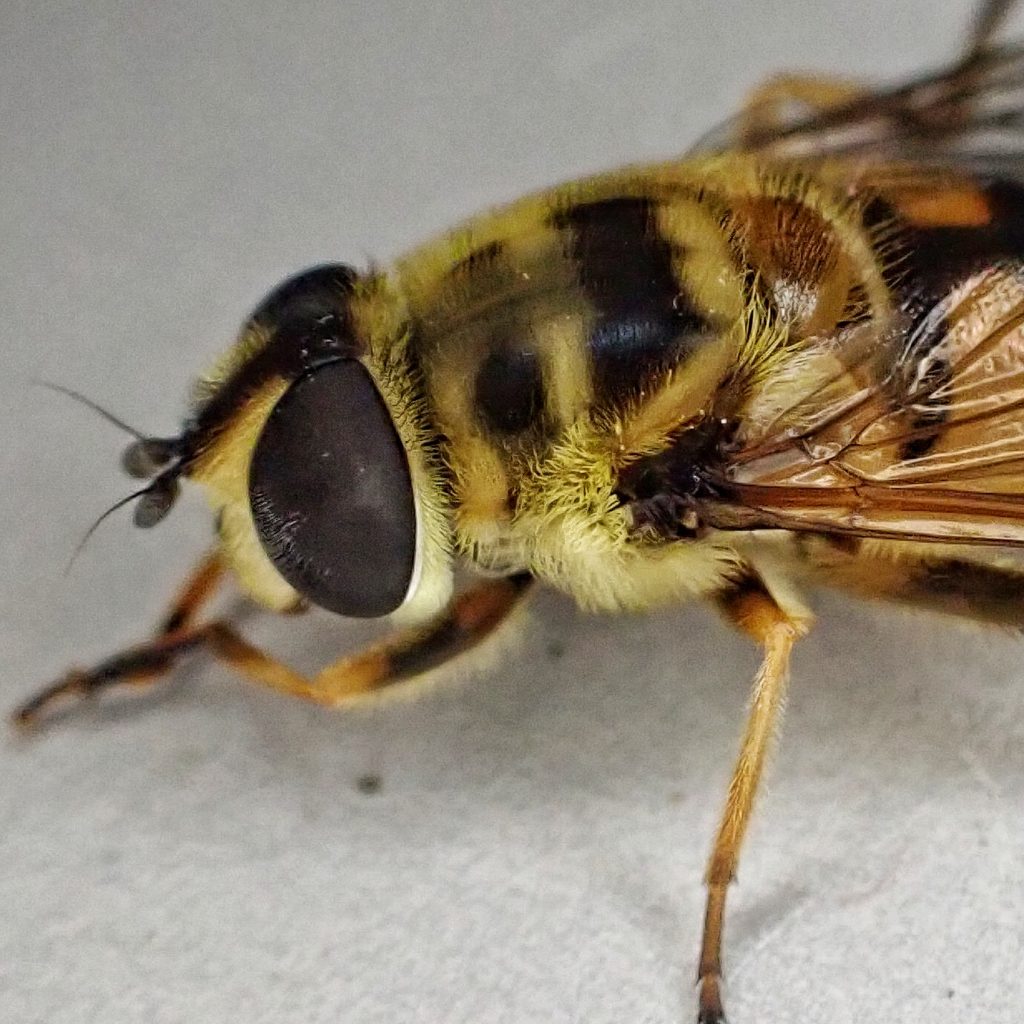
One thing that I thought was very interesting is that Myathropa florea that live in proximity to certain cetonid beetles (a subfamily of the scarabs) experience far greater and quicker growth than those without such bunk mates. Apparently the feces of the beetles either contains or facilitates the growth of some bacteria which are highly beneficial to the fly larvae as a food source. The researchers appear to have no idea whether this community sharing is chosen by the female Batman hoverfly when she is depositing her eggs, or if it is just the luck of the draw. Nor do they seem to know what, if any, benefits the cetonid beetle larvae may derive from this cohabitation.
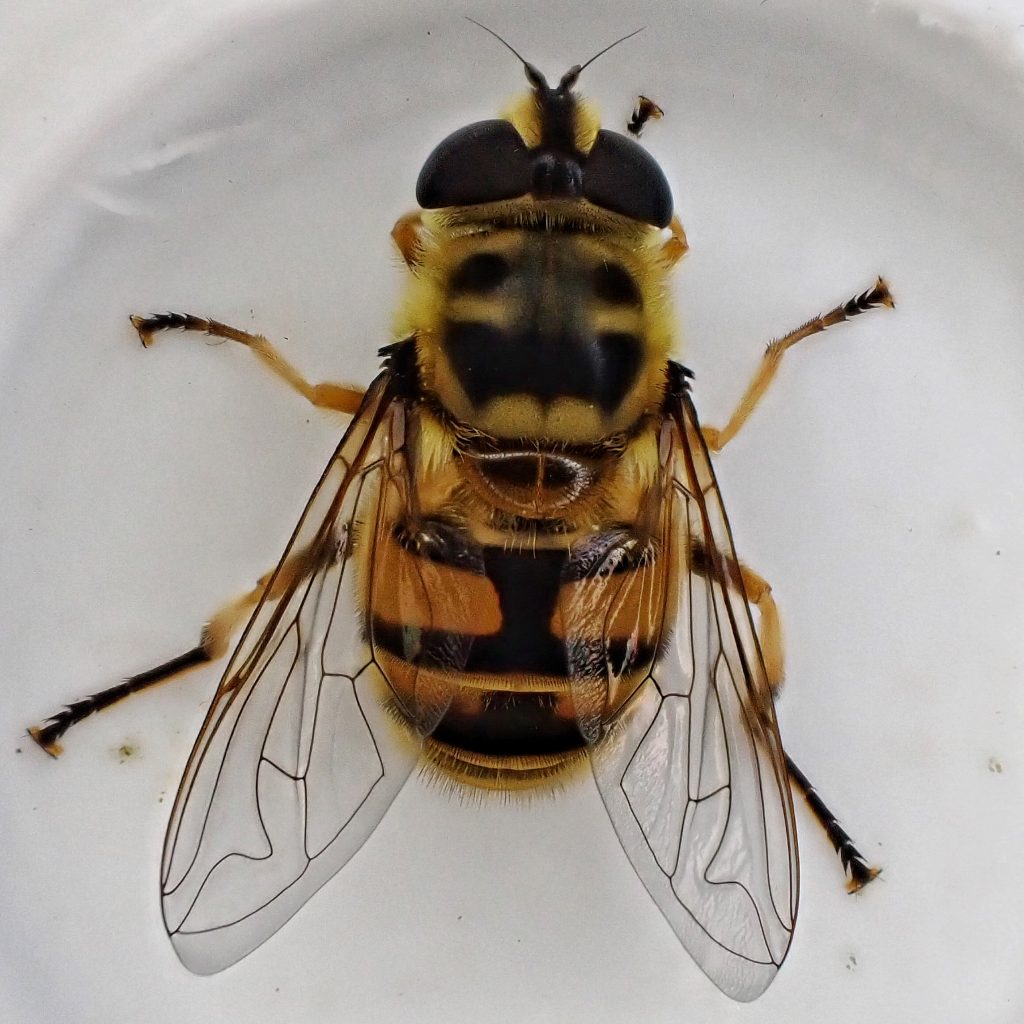
Description– Medium sized (11-15mm) flies with yellow hair bands and hairless black bands; pronotum usually with a black ‘bat symbol’, just behind a blurry grey area; legs yellowish above and dark below; face is yellow; females have a gap between the eyes, males eyes touch; wing vein r1 and r2+3 do not quite meet before they reach the costa.
Similar species–Myathropa is a monotypic genus; members of Eristalis are superficially similar but wing venation is different- in Eristalis vein r2+3 meets r1 before the costa.
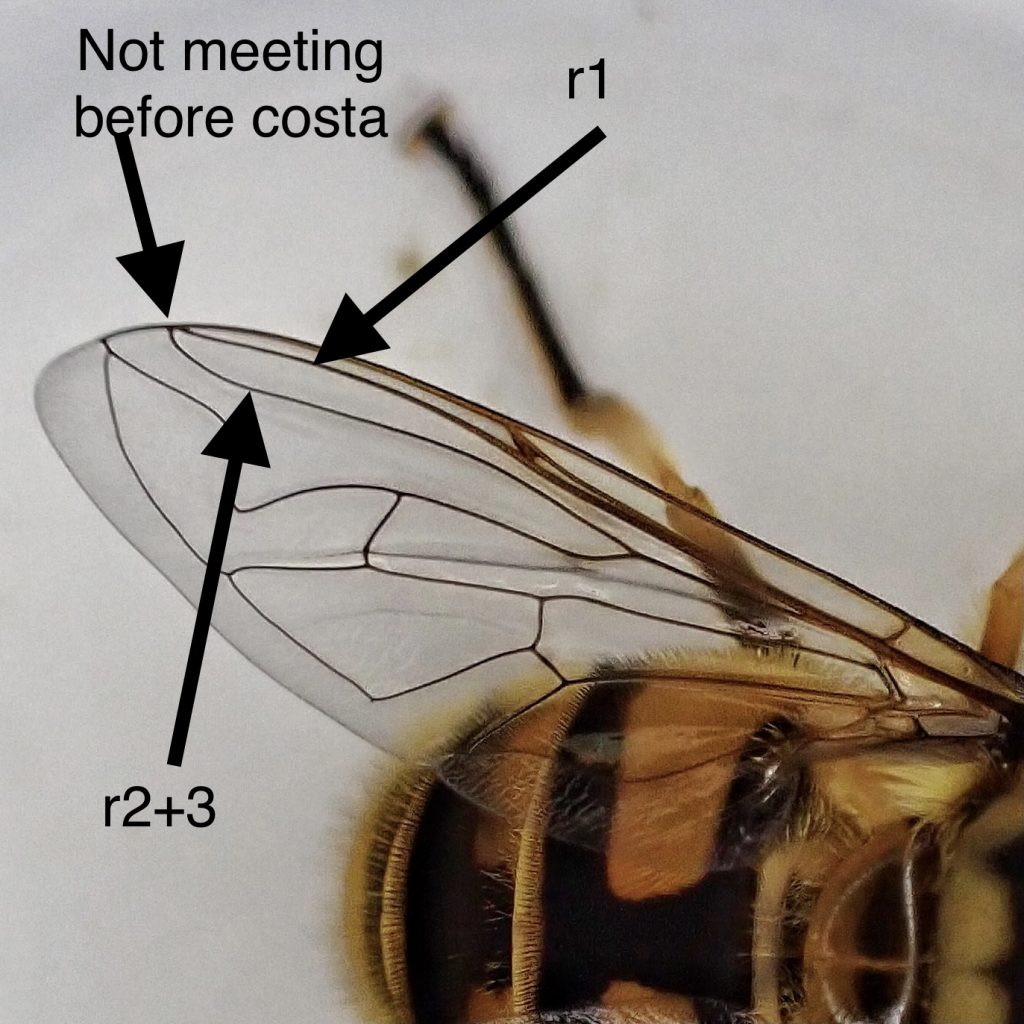
Habitat-Moist to mesic woodlands and forests, and cemeteries, parks, and gardens.
Range-Native to Eurasia and north Africa; thus far only found on the West Coast in North America; still uncommon, but probably region wide in appropriate habitat in the PNW.
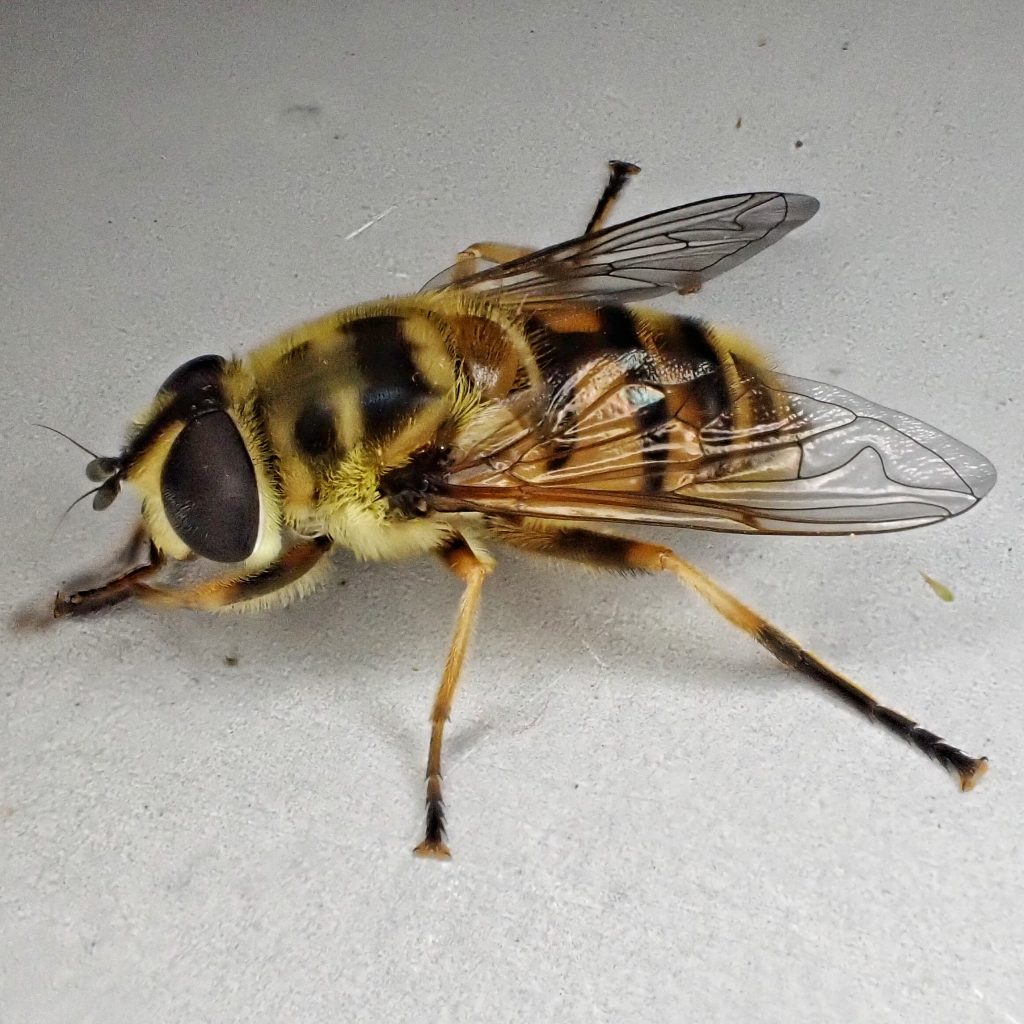
Eats-Larvae feed on bacteria; adults feed on nectar and pollen, and seem particularly fond of ivy, but are also commonly found on the white umbellifers of various species.
Eaten by-Adults are prey for any insectivore not fooled by their mimicry; larvae are probably prey for anything that finds them.
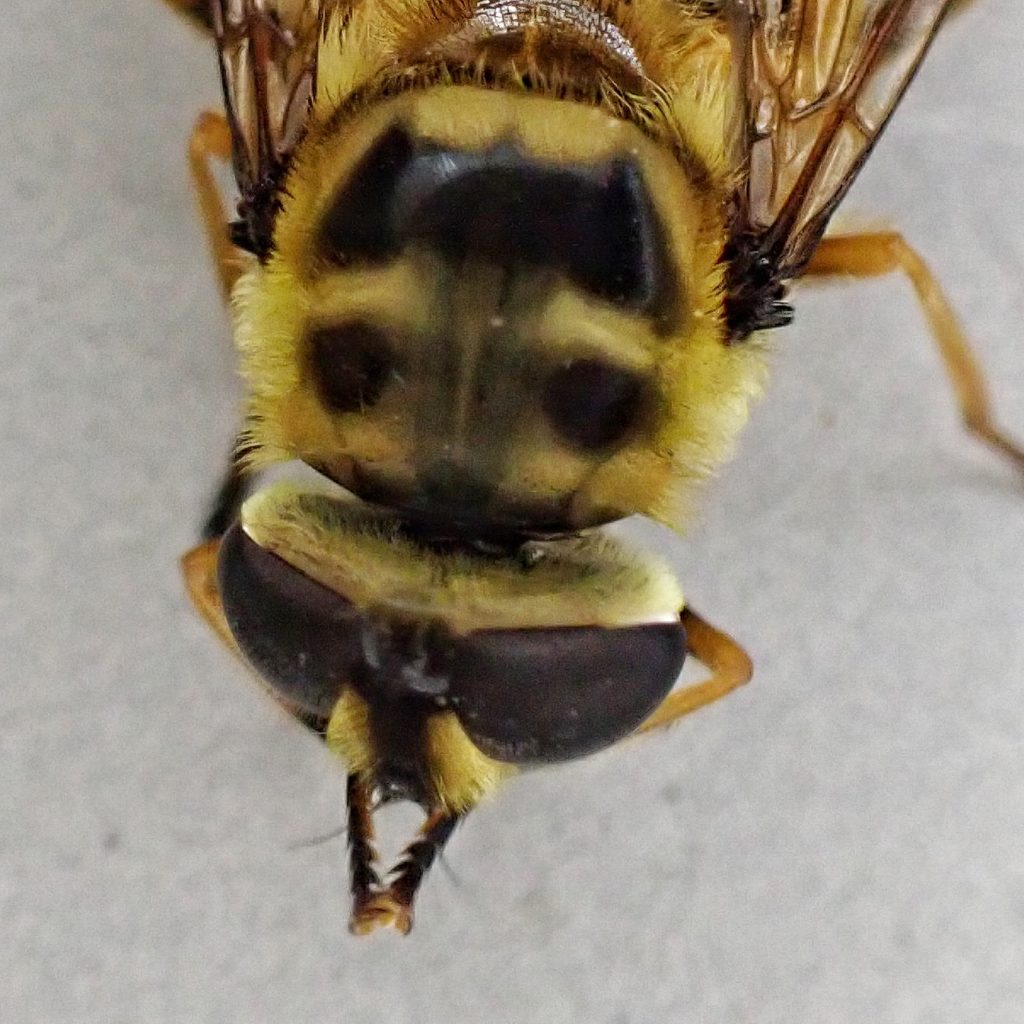
Reproduction-Eggs are laid in tree cavities, rot holes in wood, depressions amongst tree roots, even sewage lagoons and damp ground, and other aquatic or waterlogged organic stews; rat-tailed larvae undergo 3 moults; overwinter as pupa; usually complete their life cycle in a year, but sometimes extend pupal diapause for up to 2 years; most adults live 3-4 weeks.
Adults active-April to September in our region
Etymology of names–Myathropa may be from the Greek for ‘a crowd of flies’. The specific epithet florea is probably from the Latin for ‘around flowers’. But Carl Linnaeus didn’t bother to explain either one when he named it.
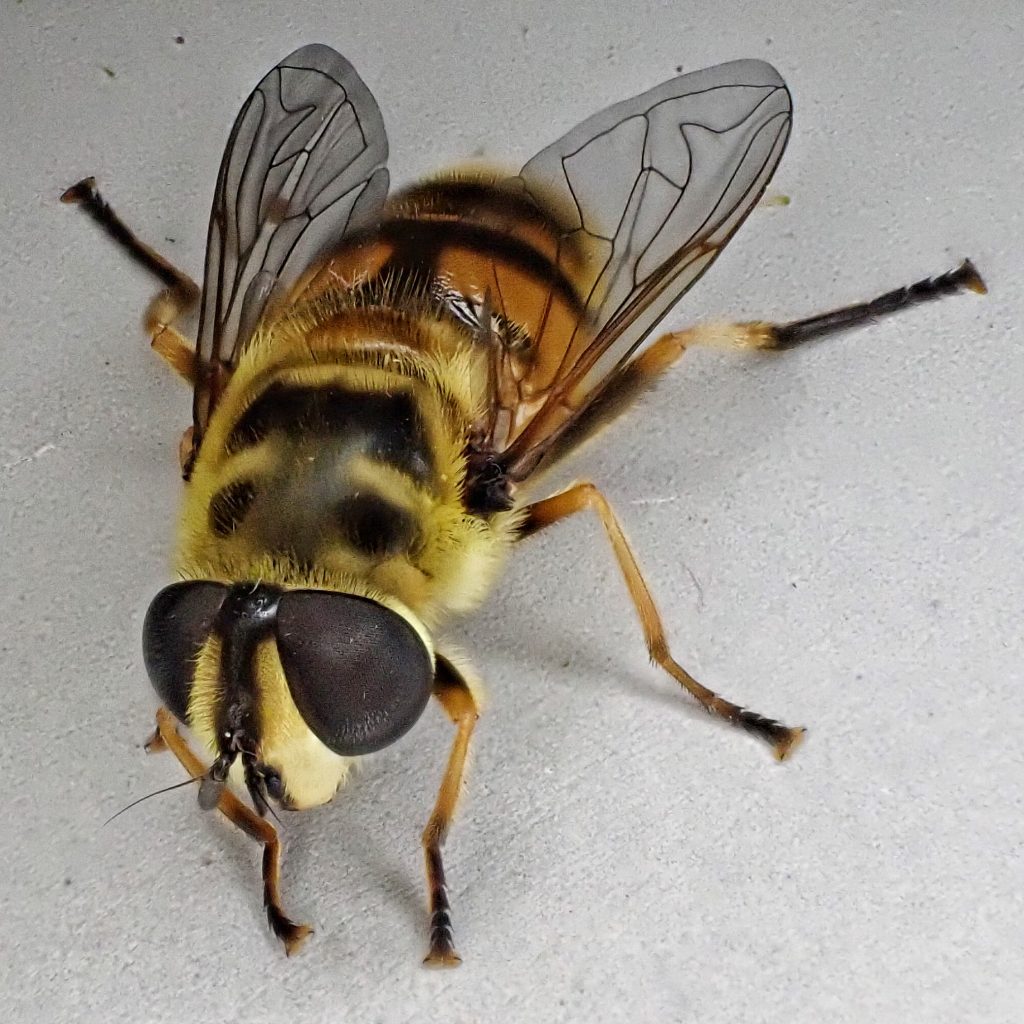
https://bugguide.net/node/view/32026
https://www.naturespot.org.uk/species/myathropa-florea
https://www.gbif.org/en/species/4516754
https://academic.oup.com/ee/article/43/2/336/528656
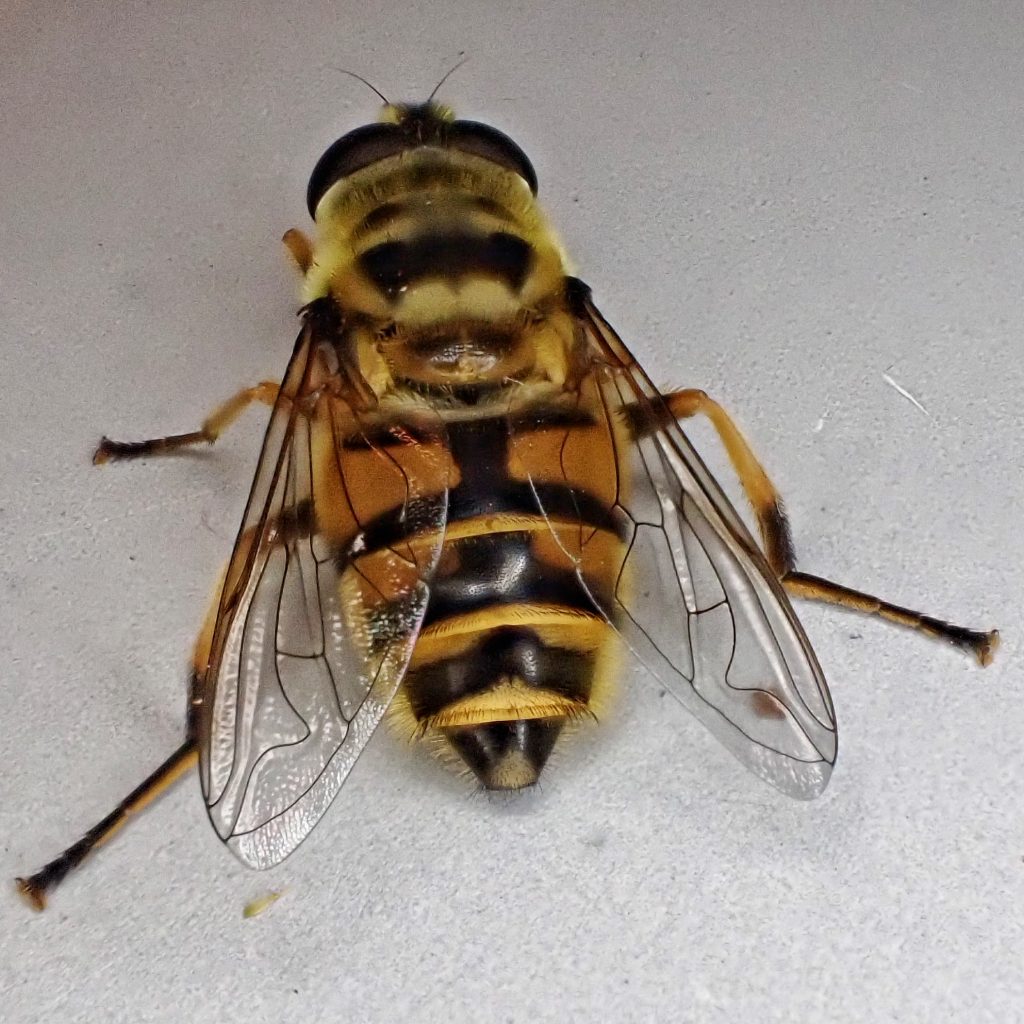
Wonderful profile! Very entertaining & interesting! Thank you ☺️
Thank you. I found one in Tacoma Wa and thought I was misidentifying it.
The Batman hoverfly! Oddly, I haven’t seen another one since then, Brad. Glad to hear the profile was useful!
Saw one in Beaverton